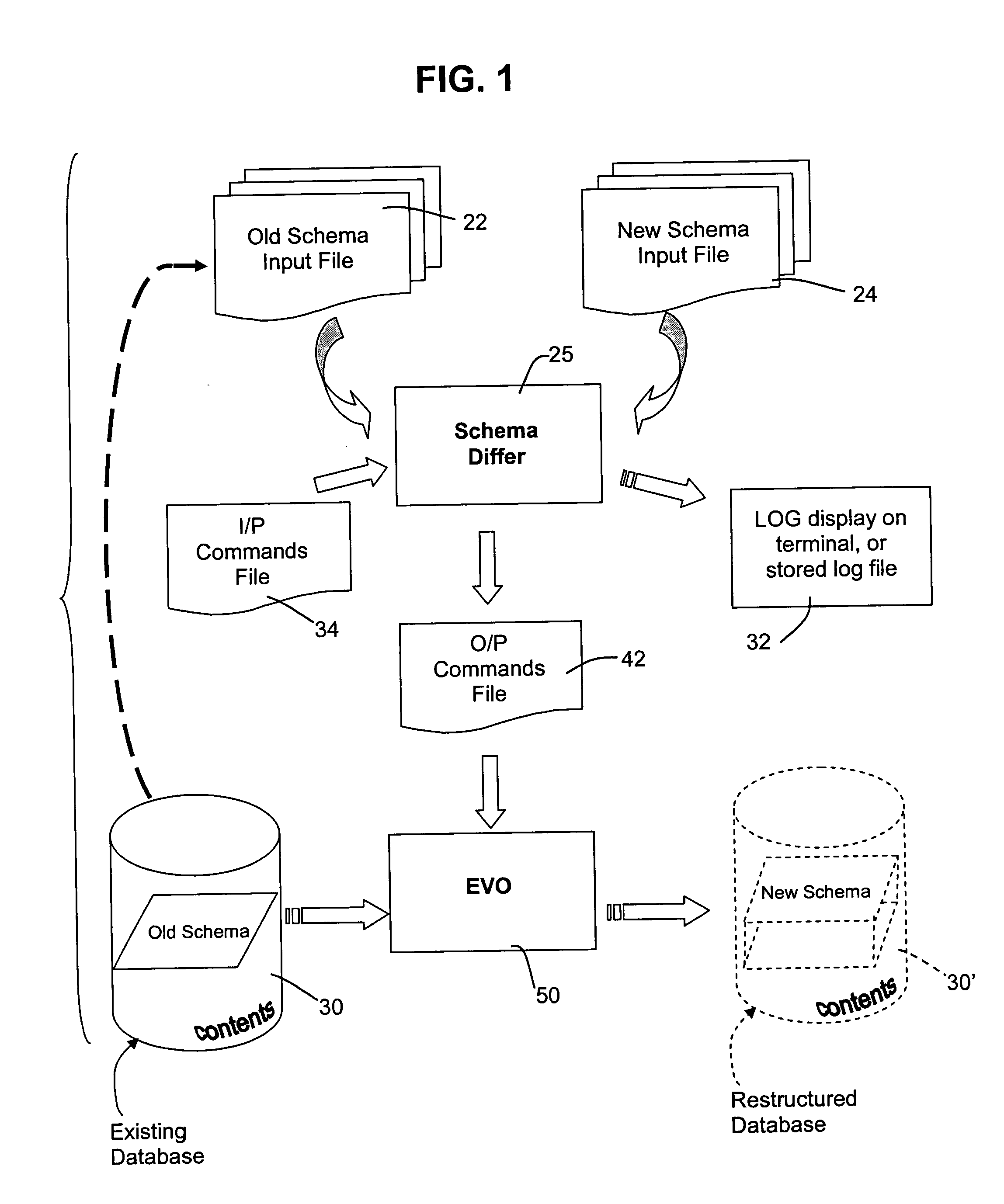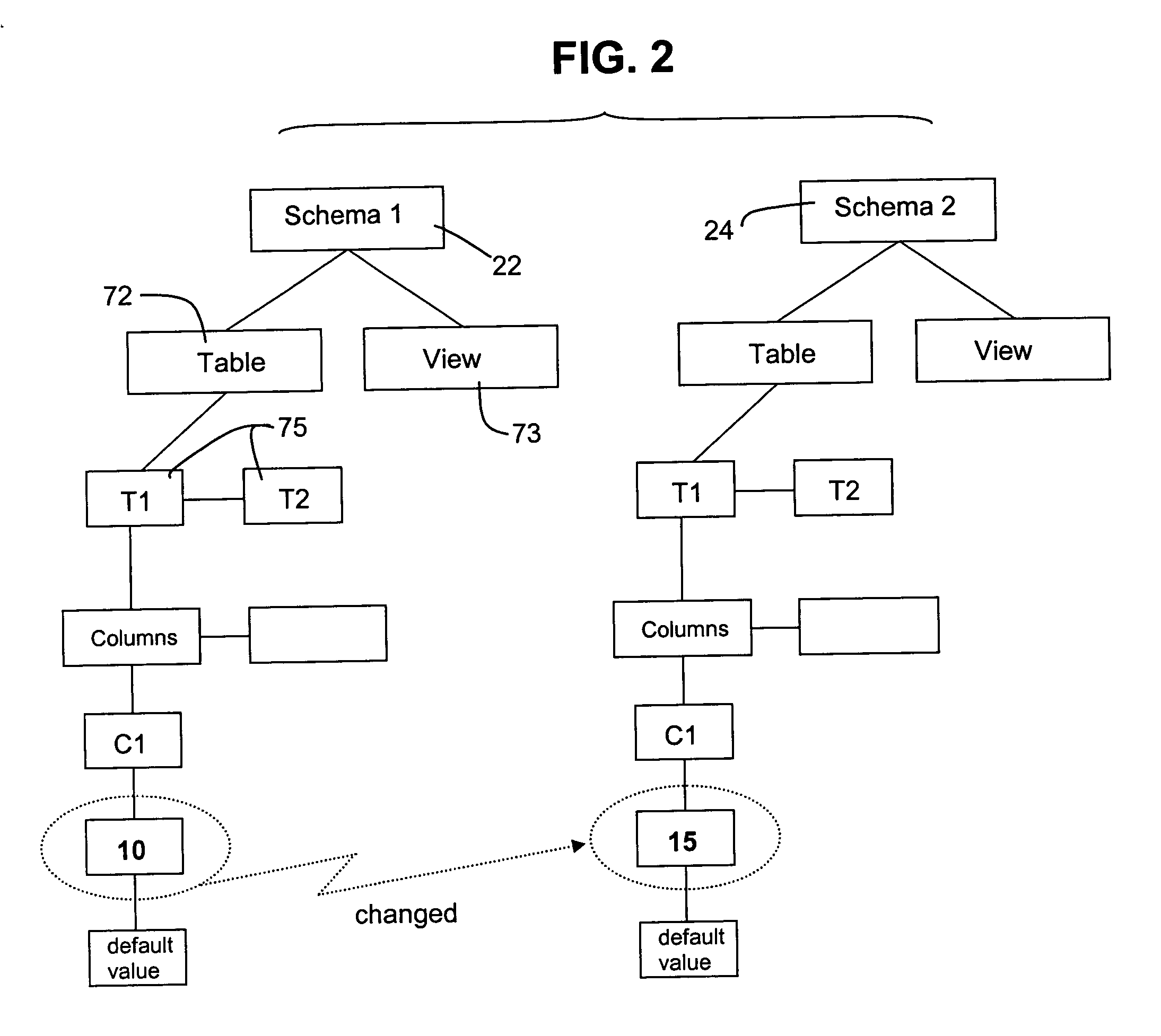Method for automated database schema evolution
a database and schema technology, applied in the field of manual database processing, can solve the problems of difficult to anticipate all the ways, the organization or schema of the database may need to change, and the change of the database schema carries, so as to facilitate the change of the database structure, reduce the risk of damage, and reduce the impa
- Summary
- Abstract
- Description
- Claims
- Application Information
AI Technical Summary
Benefits of technology
Problems solved by technology
Method used
Image
Examples
Embodiment Construction
[0040] A number of exemplary embodiments of the invention are described herein with reference to the drawings. These embodiments are examples intended to demonstrate aspects of the invention in different forms or separately. Not all these aspects are required in every embodiment of the invention, and the illustrated embodiments should be regarded as exemplary rather than limiting.
[0041] Referring to FIG. 1, the invention provides a technique to compare two different database schemas 22, 24 embodied in instructions, such as structured query language (SQL) statements, by which the contents of a database 30 can be defined with respect to certain requirements, labels and relationships among variables and the like. Such attributes are generally termed the database “structure” in this description, and are subject to definition independently of the actual values that are stored in the database. The schema that defines an existing database 30 can be distilled into its set of instructions 2...
PUM
 Login to View More
Login to View More Abstract
Description
Claims
Application Information
 Login to View More
Login to View More - R&D
- Intellectual Property
- Life Sciences
- Materials
- Tech Scout
- Unparalleled Data Quality
- Higher Quality Content
- 60% Fewer Hallucinations
Browse by: Latest US Patents, China's latest patents, Technical Efficacy Thesaurus, Application Domain, Technology Topic, Popular Technical Reports.
© 2025 PatSnap. All rights reserved.Legal|Privacy policy|Modern Slavery Act Transparency Statement|Sitemap|About US| Contact US: help@patsnap.com



